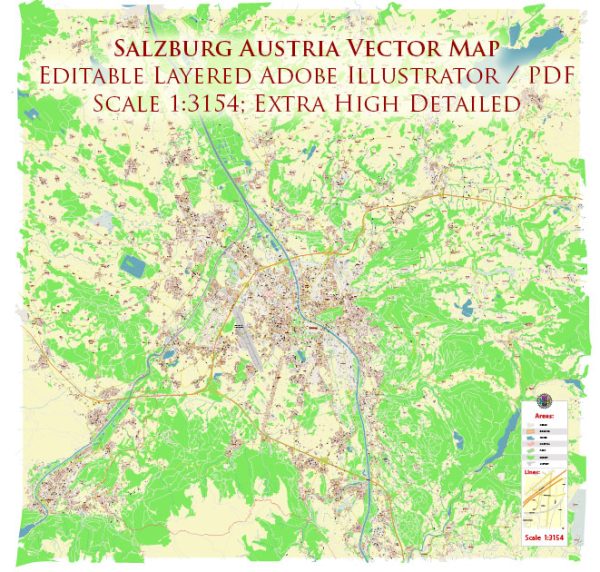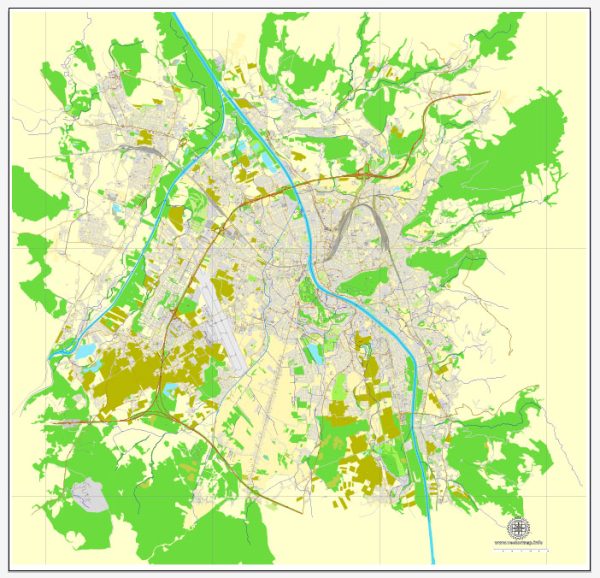Salzburg, Austria, has a rich history of urban development that spans over many centuries. Here is an overview of the key historical aspects of Salzburg’s urban development:
- Roman Era (1st century BC – 5th century AD): The area where Salzburg is located has evidence of Roman settlements dating back to the 1st century BC. The town’s name, “Salzburg,” is derived from the Latin “Salzach” and “Burg,” meaning “Salt Castle,” reflecting the importance of the salt trade in the region.
- Medieval Period (8th – 15th century): Salzburg began to take shape as a prominent town in the 8th century when it became the seat of the archbishopric. The city’s medieval character is still evident in its historic center, which is a UNESCO World Heritage Site. The Hohensalzburg Fortress, perched atop the Festungsberg hill, was built in the 11th century and played a crucial role in the defense of the city.
- Renaissance and Baroque Period (16th – 18th century): The city experienced significant growth and architectural development during the Renaissance and Baroque periods. The Mirabell Palace and Gardens, constructed in the 17th century, are notable examples of Baroque architecture. The city’s cathedral, Salzburg Cathedral (Dom zu Salzburg), underwent renovations in the Baroque style during this time.
- Mozart’s Birthplace (18th century): Wolfgang Amadeus Mozart, one of the most renowned composers in history, was born in Salzburg in 1756. His birthplace, located in the Getreidegasse, is now a museum dedicated to his life and work.
- 19th Century: In the 19th century, Salzburg underwent urban planning changes. The city walls were torn down, and the space was opened up for expansion. This period saw the construction of the University of Salzburg and the opening of the city to more modern influences.
- 20th Century: Salzburg faced challenges during World War II, but the city largely escaped major damage. After the war, efforts were made to preserve and restore the historic character of the city. The Salzburg Festival, an annual celebration of music and drama, was established in 1920 and has since become world-famous.
- Contemporary Development: Salzburg continues to balance its rich history with modern development. The city has faced challenges related to tourism and strives to preserve its cultural heritage while adapting to the demands of the 21st century.
Today, Salzburg’s historic center, with its well-preserved medieval and Baroque architecture, attracts tourists from around the world. The city’s commitment to cultural heritage, coupled with its modern amenities, makes it a unique and vibrant urban environment.



 Author: Kirill Shrayber, Ph.D.
Author: Kirill Shrayber, Ph.D.